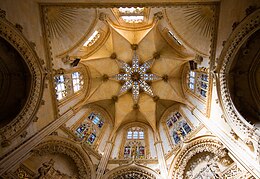**1. History and Evolution:**
– Skylights have been used since Ancient Roman times, evolving from open structures like the oculus of the Pantheon to glazed closed skylights due to glass production advances during the Industrial Revolution.
– Mass production units from the mid-20th century expanded skylight uses, with a focus on energy conservation driving design innovation and efficiency rating systems.
– Skylights now serve various purposes and contexts, adapting to modern architectural needs and sustainability requirements.
**2. Types and Uses:**
– Skylighting types include roof windows, unit skylights, tubular daylight devices (TDDs), sloped glazing, and custom skylights, each catering to specific design and functionality requirements.
– Skylights are primarily used for daylighting and providing a visual connection to the outdoor environment, aiding in sustainable building practices like passive solar heating.
– Different types of skylights such as open, fixed unit, operable, and retractable offer varying levels of control and flexibility in lighting and ventilation.
**3. Solar Architecture and Efficiency:**
– Skylights are widely incorporated in residential, public, and commercial buildings for daylighting purposes, with daylighting capable of reducing lighting energy use in buildings by up to 80%.
– Modern glazing materials help mitigate glare and effectively capture sunlight, ensuring optimal daylighting efficiency.
– Skylights remain efficient even on overcast days, contributing to energy savings and overall building performance.
**4. Materials and Performance:**
– Advances in glass and plastic infill systems have enhanced skylight performance, with glass skylights commonly using insulated glass units with Low-E coatings for improved thermal efficiency.
– Plastic glazing materials like acrylic, polycarbonate, and copolyester are commonly used in skylights and TDDs, with UV stabilization for durability.
– Rating systems such as NFRC, U-factor, and SHGC assist in choosing skylights based on their performance and energy efficiency characteristics.
**5. Benefits and Impact:**
– Optimizing daylighting through skylights has been shown to improve student test scores in classrooms and reduce the need for electrical lighting and smaller window glazing.
– Energy-efficient skylights can lower costs and reduce environmental impacts, while also providing a visual connection to outdoor environments.
– Properly selected skylights strike a balance between energy efficiency and daylight supply, contributing to overall building sustainability and occupant well-being.
A skylight (sometimes called a rooflight) is a light-permitting structure or window, usually made of transparent or translucent glass, that forms all or part of the roof space of a building for daylighting and ventilation purposes.



Definition from ChatGPT:
Skylight:
A skylight is a window installed in a roof or ceiling to allow natural light to enter a building from above. Skylights are often used to brighten up interior spaces and reduce the need for artificial lighting during the day.